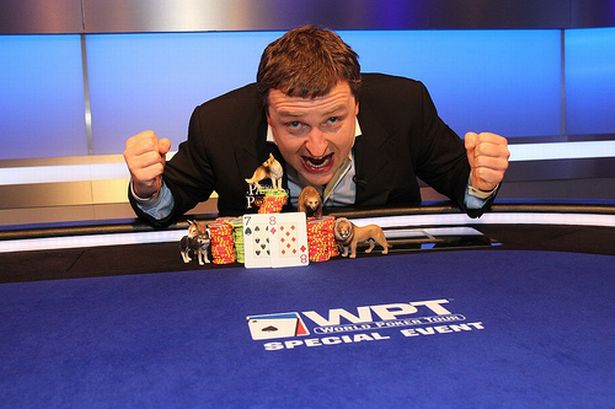Play Omaha Hi Lo Free
If you run out of play money chips, take a seat at a ring game table and you’ll receive a free top-up. Real money and play money. There are plenty of options and games available when playing with play money, and if you wish to play for real money, you can deposit funds into your account and take advantage of our first deposit offer.
At Spartan Poker you can play several variants of poker like Texas Hold’em, Omaha, Omaha Hi-Lo, 7 Card Stud and more. You can either play games that require an entry fee, or opt to play free poker games. Omaha hi lo or 'Omaha 8' is similar to PLO / pot-limit Omaha (Omaha 'high'). Except Omaha hi lo is the split-pot version where players compete for both the 'low' and 'high' halves of the pot. Like in PLO, hi low players get four hole cards. They need to use two of them combined with 3 community cards to make a poker hand. Play Free Omaha Poker Hi-Lo Online If you're looking to try out some Omaha Hi-Lo poker games online you can play them entirely free without having to make a deposit. Simply create a new account at one of the poker sites above that offer Omaha Hi-Lo games and search the 'Play Money' lobby for the Omaha Hi-Lo tables.
- Appendices
- Miscellaneous
- External Links
On This Page
Introduction
The Hi-Lo Count is the most widely written about, and in my judgment, the most commonly used card counting strategy. The High-Low was first introduced in 1963 by Harvey Dubner1. It has since been discussed by just about all the major blackjack writers. In my opinion, the best introductory treatment is in Professional Blackjack by Stanford Wong, and the most detailed coverage is in Blackjack Attack by Don Schlesinger.
How it Works
Following is a brief explanation of how to use the Hi-Lo.
Step 1: Assign a point value to each rank, as follows.
High-Low Point Values
Step 2: Start with a 'Running Count' of zero at the start of the deck/shoe. As cards are revealed, keep adding or subtracting from the Running Count, according to the point system in step 1. For example, if the first ten cards to come out of the shoe were 3, 5, K, 7, Q, A, 8, 5, 4, 2, then the running count would be 1 +1 -1 +0 -1 -1 +0 +1 +1 +1 = +2.
Step 3: Divide the running count by the number of decks remaining, to get what is known as the 'True Count.' This is the part that beginning counters hate. You don?t need to be exact. A rough estimate will do, in my opinion. Let's look at example. The running count is +7 and there are about 4 decks left. The true count would be 7/4 = 1.75. Round that up to 2, to keep it simple. The more you play the more you will be comfortable eyeballing this adjustment, without doing any real division in your head. Usually the right play is obvious. In borderline cases only will you need to do this True Count conversion.
Step 4: The greater the true count, the more you should bet. This is where card counting becomes more art than science. Some blackjack books give rigid rules on how this should be done. However, the casino managers have read these books too, and the patterns recommended in earlier books now set off red flags. How you do this should depend on your own style, and how much heat you are getting. It helps avoid heat to keep the ratio of maximum bet to minimum bet to a limit, known as the ?Bet Spread.? Only increasing bets after a win, only decreasing after a loss, and staying the same after a push, makes play look more natural, but at a cost to profitability.
Step 5: For some hands, you will play according to the True Count and a table of 'Index Numbers,' rather than basic strategy. The greater the count, the more inclined you will be to stand, double, split, take insurance, and surrender. For example, the Index Number for a player 15 against a dealer 10 is +4. This means the player should stand if the True Count is +4 or higher, otherwise hit.
The following tables are known as the 'Illustrious 18' and 'Fab 4' respectively.2 They appear in Blackjack Attack by Don Schlesinger, and are republished here with permission. These are the most important index numbers to remember. Knowing only these will give the counter 80% to 85% of the value of knowing every index number, based on a six-deck game. The difference is more in single and double-deck games. The lists are given in order of value. If you can?t memorize all of them, start at the top, and work your way down.
Illustrious 18
| Order | Play | Index |
|---|---|---|
| 1 | Insurance | +3 |
| 2 | 16 Vs. 10 | +0 |
| 3 | 15 Vs. 10 | +4 |
| 4 | 10,10 Vs. 5 | +5 |
| 5 | 10,10 Vs. 6 | +4 |
| 6 | 10 Vs. 10 | +4 |
| 7 | 12 Vs. 3 | +2 |
| 8 | 12 Vs. 2 | +3 |
| 9 | 11 Vs. A | +1 |
| 10 | 9 Vs. 2 | +1 |
| 11 | 10 Vs. A | +4 |
| 12 | 9 Vs. 7 | +3 |
| 13 | 16 Vs. 9 | +5 |
| 14 | 13 Vs. 2 | -1 |
| 15 | 12 Vs. 4 | 0 |
| 16 | 12 Vs. 5 | -2 |
| 17 | 12 Vs. 6 | -1 |
| 18 | 13 Vs. 3 | -2 |
The player should stand/double/split if the True Count equals or exceeds the Index Number, otherwise hit. The player should take insurance if the True Count is +3 or greater.
Fab 4 Surrenders
| Order | Play | Index |
|---|---|---|
| 1 | 14 Vs. 10 | +3 |
| 2 | 15 Vs. 10 | +0 |
| 3 | 15 Vs. 9 | +2 |
| 4 | 15 Vs. A | +1 |
The player should surrender if the True Count equals or exceeds the Index Number.
A full table of all index numbers can be found in Chapter 3, and Appendix A, of Professional Blackjack by Stanford Wong.
The next table shows some statistics using the High-Low. The blackjack rules this table is based are liberal Vegas shoe, as follows:
Six decks
Dealer stands on soft 17
Surrender allowed
Double after split allowed
Player may resplit to four hands, including aces
To avoid setting off red flags, the simulation increased the bet after a win only, decreased after a loss only, and always stayed the same after a push, except resetting to a minimum bet after a shuffle. The simulation rounded the remaining decks to the nearest half deck, otherwise playing perfectly.
High-Low Statistics
| Spread | Penetration | Index Numbers | Player Adv. | Std. Dev. | Avg.Bet |
|---|---|---|---|---|---|
| 1 to 5 | 4 | I18+F4 | 0.157% | 1.50 | 1.35 |
| 1 to 10 | 4 | I18+F4 | 0.368% | 2.04 | 1.57 |
| 1 to 15 | 4 | I18+F4 | 0.578% | 2.67 | 1.73 |
| 1 to 5 | 4.5 | I18+F4 | 0.300% | 1.60 | 1.41 |
| 1 to 10 | 4.5 | I18+F4 | 0.587% | 2.27 | 1.68 |
| 1 to 15 | 4.5 | I18+F4 | 0.834% | 3.06 | 1.90 |
| 1 to 5 | 5 | I18+F4 | 0.469% | 1.70 | 1.47 |
| 1 to 10 | 5 | I18+F4 | 0.837% | 2.52 | 1.80 |
| 1 to 15 | 5 | I18+F4 | 1.147% | 3.49 | 2.10 |
| 1 to 5 | 4.5 | All | 0.313% | 1.61 | 1.41 |
| 1 to 10 | 4.5 | All | 0.608% | 2.29 | 1.68 |
| 1 to 15 | 4.5 | All | 0.862% | 3.10 | 1.91 |
| 1 to 5 | 5 | All | 0.494% | 1.71 | 1.47 |
| 1 to 10 | 5 | All | 0.857% | 2.55 | 1.81 |
| 1 to 15 | 5 | All | 1.182% | 3.54 | 2.11 |
Explantion of columns
Spread: This is the ratio of the player?s minimum bet to maximum bet. The bigger the range, the greater the player?s advantage, and bankroll volatility. A wide bet spread also sets off a red flag. In a six-deck game, I think a 1 to 15 spread is about the most aggressive the player should get. The simulation played one betting spot only.
Penetration: How many decks played before reaching the cut card. In a six-deck shoe, 4.5 is the norm.
Index Numbers: I already explained index numbers above. Simulations were run using both the Illustrious 18 and Fab 4 (I18+F4) above, and with the full table. The difference is not much, which shows that knowing the top 22 gets you most of the benefit of knowing all of them.
Player Advantage: This is the ratio of net player win to total initial bets. For example, in the last row, the player could expect to win 1.182% of his total initial bets.
Standard Deviation: This is a term for the volatility per initial bet.
Average Bet: The average final bet per hand, compared to the lowest bet For example, in the last row, if the player?s minimum bet were $100, his average bet would be $211. This includes additional money bet due to doubles and splits.
This table was created using CVCX Blackjack Analyzer by Casino Vérité. This software produces hundreds of different statistics for just about any set of rules, betting strategies, and playing strategies. For the player who wants to run these tests, this software is the best there is, in my opinion.
Footnotes

- Professional Blackjack by Stanford Wong, page 31, 1994 ed.
- Blackjack Attack by Don Schlesinger, page 62, 2004 ed.
Acknowledgments
Don Schlesinger: For his permission to reprint the Illustrious 18 and Fab 4 tables from his book, Blackjack Attack.
Norman Wattenberger: For his complimentary use of CVCX Blackjack Analyzer by Casino Vérité.
Practice
Practice your card counting skills with our trainer.
Further Reading
- Card Counting Introduction.
- Wizard Ace-Five Count: Very easy and simple card counting strategy.
- '21' Movie Review: Truth and fiction about the movie about the MIT card counting team.
- Blackjack book reviews.
- Main blackjack page.
Written by:Michael Shackleford
On This Page
Play Omaha Hi-lo online, free
Introduction
This poker calculator will give you the odds of a win, loss, and tie for each player in Omaha or Omaha Hi/Lo 8 or better. Click on any card and it will be used in the position indicated by the yellow frame. You may click on any valid card to move the frame there. Check 'folded hand' to indicate the given player is out of the hand, removing his cards from the remaining deck. You may also configure any random situation. Please allow a few seconds for each scenario to be calculated, especially Hi/Lo, because calculating Omaha takes longer than calculating Texas Hold ’em. Enjoy!
Play Omaha Hi Lo For Free
